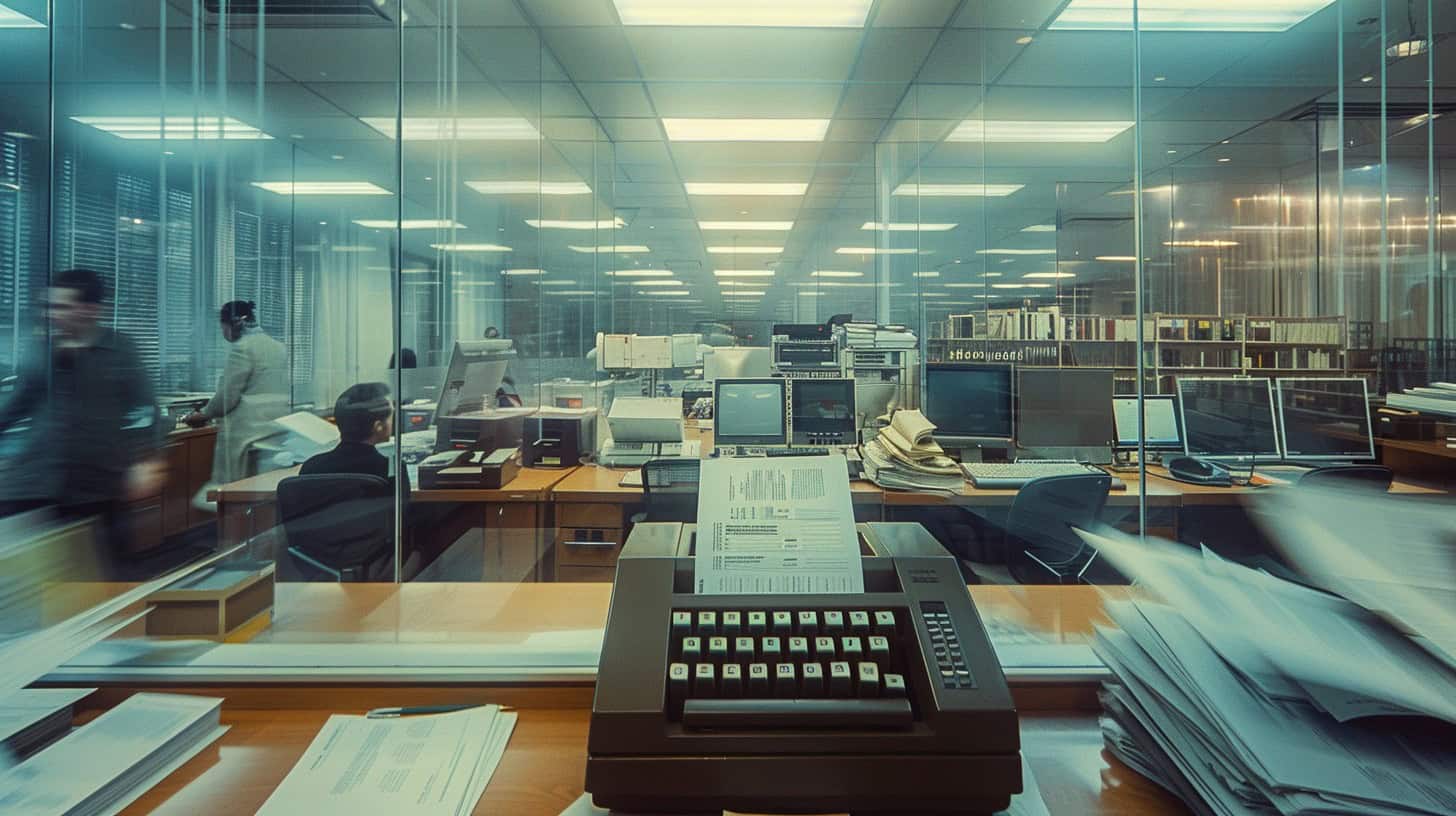You might wonder if anyone still uses fax machines. Surprisingly, they remain a staple in sectors like healthcare and law. This article will reveal three key reasons why faxing continues to hold its ground in today’s digital world.
Stay tuned.
Key Takeaways
Fax machines are still used in legal, medical, and established businesses for security, legal needs, and dependability in remote signature exchanges.
Modern technology combines fax with email and online services to keep faxing relevant and secure.
Digital faxes use encryption for safe sending and storage over the internet. Online fax services allow sending and receiving faxes without physical machines.
Table of Contents
The Prevalence of Fax Machines Today
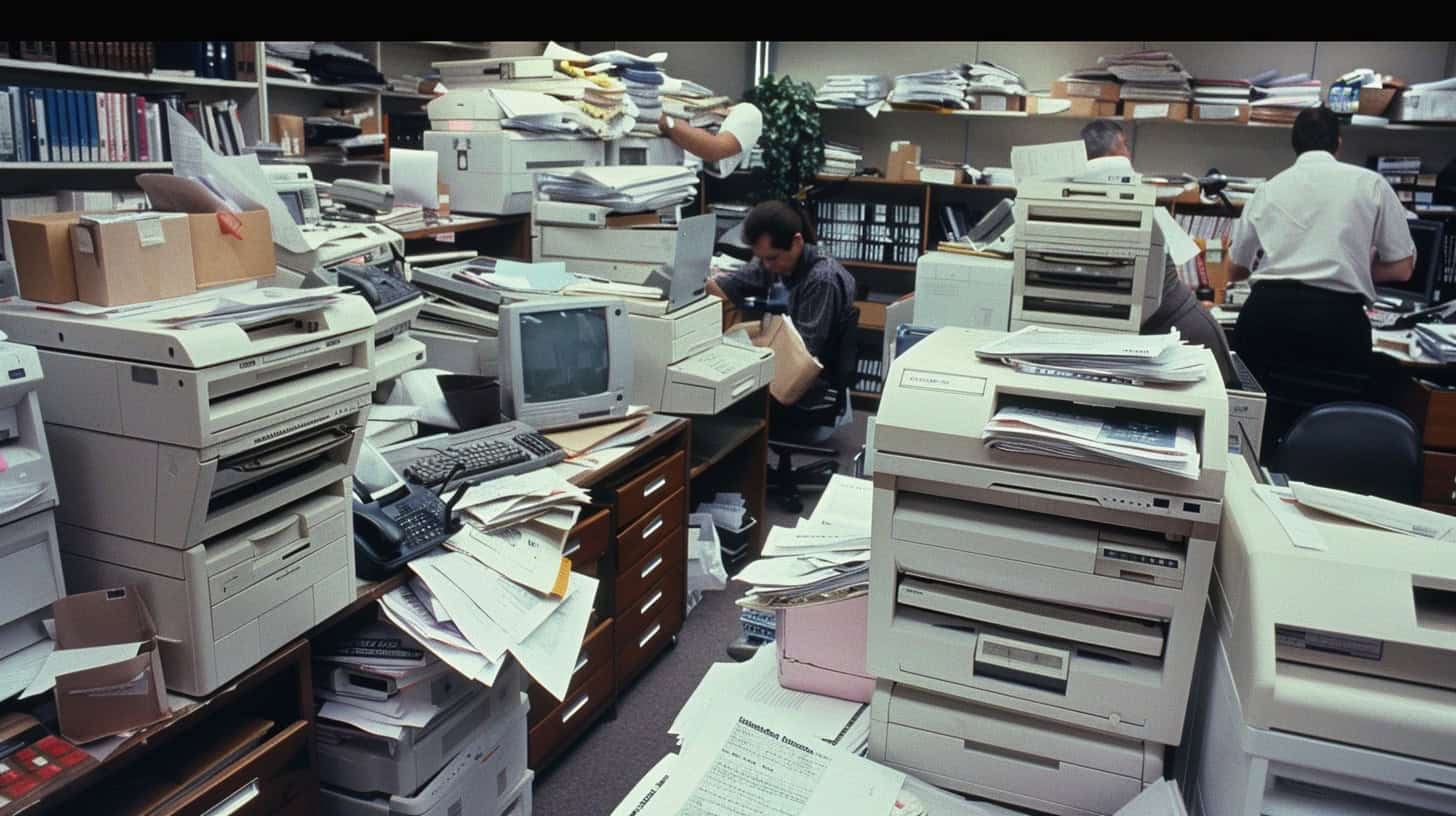
Fax machines are still around, more than you might think. Lawyers and doctors use them a lot…and businesses that have been around for a while? They do too. Now, with fax API, even new tech mixes old fax vibes with the internet – making sure these machines aren’t going anywhere soon.
Fax Machines in Legal and Medical Professions
Lawyers and legal professionals trust fax machines for sending legally binding documents. This method meets strict legal standards that email messages can’t match. Faxes ensure the document gets to the right person with a time stamp, making them hard to dispute.
Courts often need these paper trails. They show clear evidence of communication and agreements.
Medical teams use faxes daily, especially for patient information due to HIPAA rules about privacy. Doctors share prescriptions and medical records safely this way, avoiding data breaches that email systems might face.
With faxing, they make sure private details stay secure between offices, pharmacies, and health insurance companies.
Continued Use in Established Businesses
Established businesses often stick with fax machines. They fear losing orders from customers who still use old contact info. Think business cards, signs, and bills with fax numbers printed on them.
Shops worry about missing a beat in sales if they drop their fax machines. It’s all about not fixing what isn’t broken.
Law enforcement and government need quick ways to send paper records that aren’t digital yet. They turn to faxes for speed and safety. This method helps share important info fast, without the risks that come with emails or online messages.
In these cases, facsimile machines prove invaluable for swift communication among offices.
Key Reasons Fax Machines Remain in Use
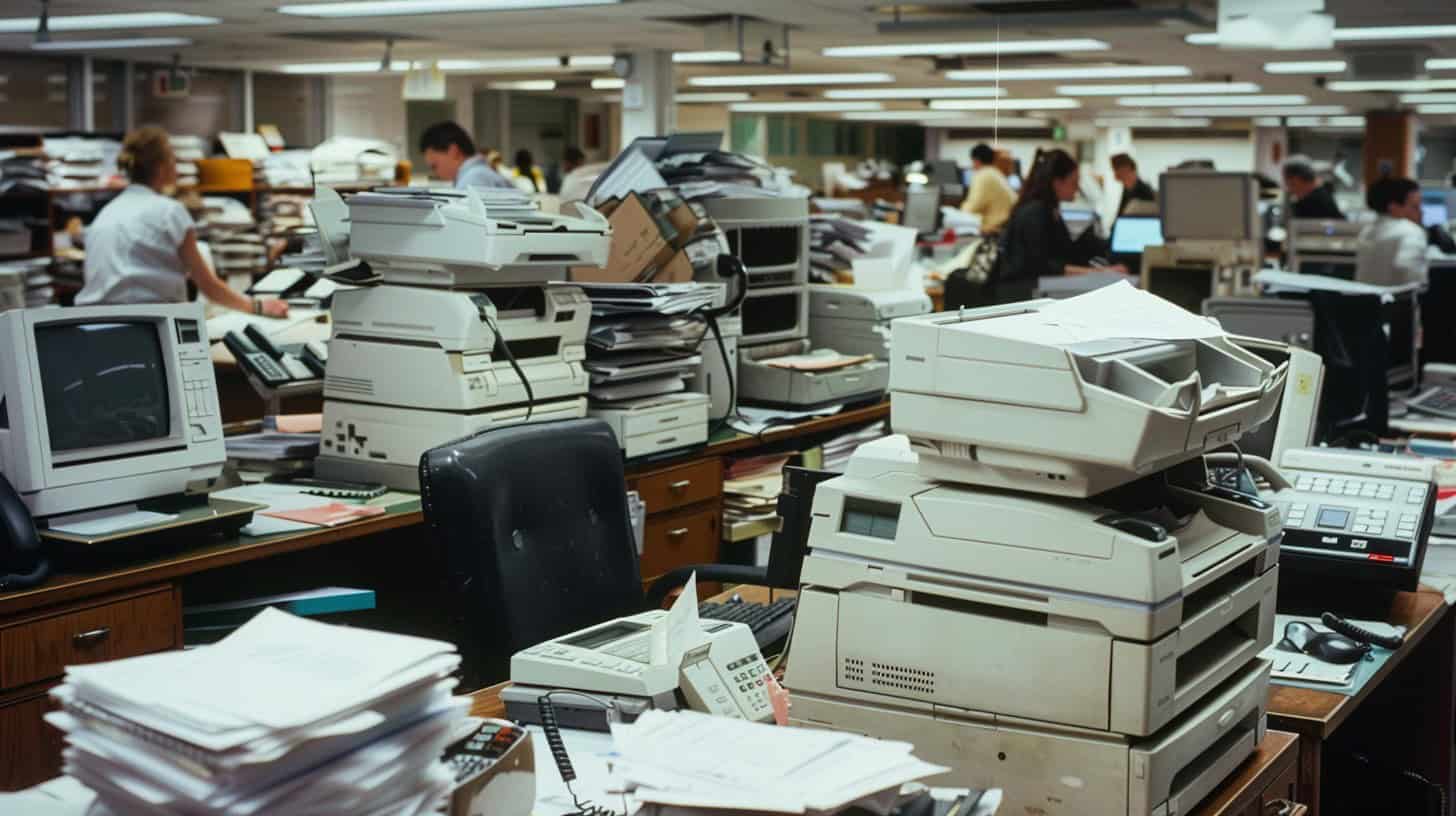
Fax machines stick around because they offer tight security and meet legal needs. People trust them for signing documents from far away, without fear of prying eyes or lost data.
Security Benefits of Fax Over Email
Fax outshines email in security for several reasons. First off, fax transmissions are less prone to malware and viruses. Unlike emails that can be a playground for harmful software, faxes transmit through telephone lines, making it much harder for cyberattacks to occur.
This means private data stays safe. Also, while an email can easily land in the wrong inbox or get intercepted by hackers, fax messages maintain their course securely from sender to receiver.
In my experience using both fax and email for sensitive documents, I’ve seen firsthand how faxes provide that extra layer of safety against third-party interceptions.
Faxes have this unique feature where they cannot be hijacked mid-transmission by unwanted eyes – a common threat with electronic communications today. Moreover, the legal world trusts faxes more because these documents are considered legally binding upon receipt.
So whether it’s medical records under HIPAA or contracts needing signatures without delay, faxing offers peace of mind no digital mail can match.
Legal Requirements for Hard Copies
Legal professionals and businesses often must fax documents because the law demands hard copies for certain transactions. Courts and government bodies sometimes need physical documents to proceed with cases and official business.
This practice makes legal contracts, patient records, and important notices secure. Laws like the Health Insurance Portability and Accountability Act (HIPAA) protect privacy but also require these paper trails for verification.
For signatures to be legally binding, many sectors still trust traditional faxing over digital formats. This is crucial in medicine, where doctors sign prescriptions, or in finance, when closing deals.
Fax machines guarantee that these critical papers are exchanged promptly and reach their destination without changes or unauthorized access. Esignatures gained ground but have not replaced faxes completely in areas governed by strict regulations on document handling.
Dependability for Remote Signature Exchanges
Fax machines excel in remote signature exchanges, guaranteeing that documents get immediate attention and signatures without delay. Thanks to digital fax technologies, sending a document for a signature takes mere seconds.
This process ensures that no time is wasted in physical transportation or risking lost mail. For employment lawyers and the health care industry, where every minute counts, this reliability is crucial.
Digital faxes maintain the integrity of eSignatures, making them as valid as those inked by hand.
Moving on to innovations in fax technology combines these dependable features with modern advances like internet faxing and cloud-based services.
Innovations Extending Fax Machine Relevance
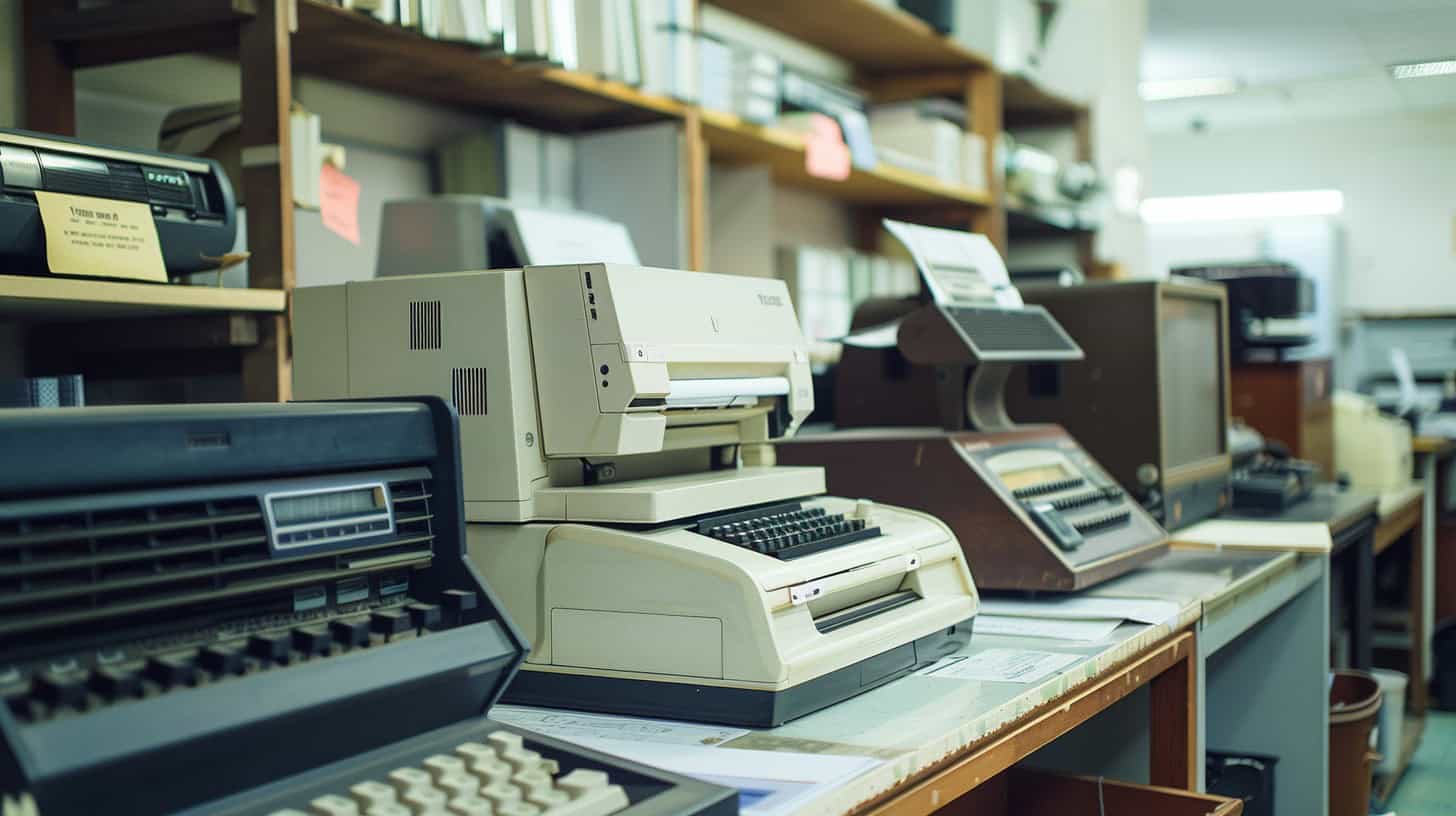
Fax machines are keeping up with tech. They mix old school faxing with modern email and digital networks, making them smarter and more useful today.
Combining Fax with Email Solutions
Modern tech merges fax with email, making sending documents easy and secure. This blend leverages the best of both worlds – the security features of traditional fax and the convenience of emails.
Users can now send a digital fax directly from their email inbox, bypassing the need for physical machines. eFax solutions upgrade old-style fax to work seamlessly with internet services, smartphones, and computers.
Digital technologies like cloud storage services support this fusion, allowing users to store and access faxes online anytime. Advances in portable document format (PDF) and image formats such as JPEG ensure documents retain their quality over digital networks.
Next up, let’s explore advances in digital fax technologies that keep pushing boundaries.
Advances in Digital Fax Technologies
Digital fax technologies now use encryption for sending and storing messages. This means that digital faxes are safe both when they move across the internet and when they sit in your inbox.
Ooma Office makes it easy with a special app. This app lets you send faxes over the internet without needing traditional fax machines.
Network faxes give us many ways to send documents – from one fax machine to another, from fax to computer, or even over IP fax lines. With adapters made for internet phones, these services work smoothly on modern networks.
They make sure your documents get where they need to go safely and quickly, turning old-school faxing into a secure method fit for today’s digital world.
Utilizing Contemporary Fax Solutions
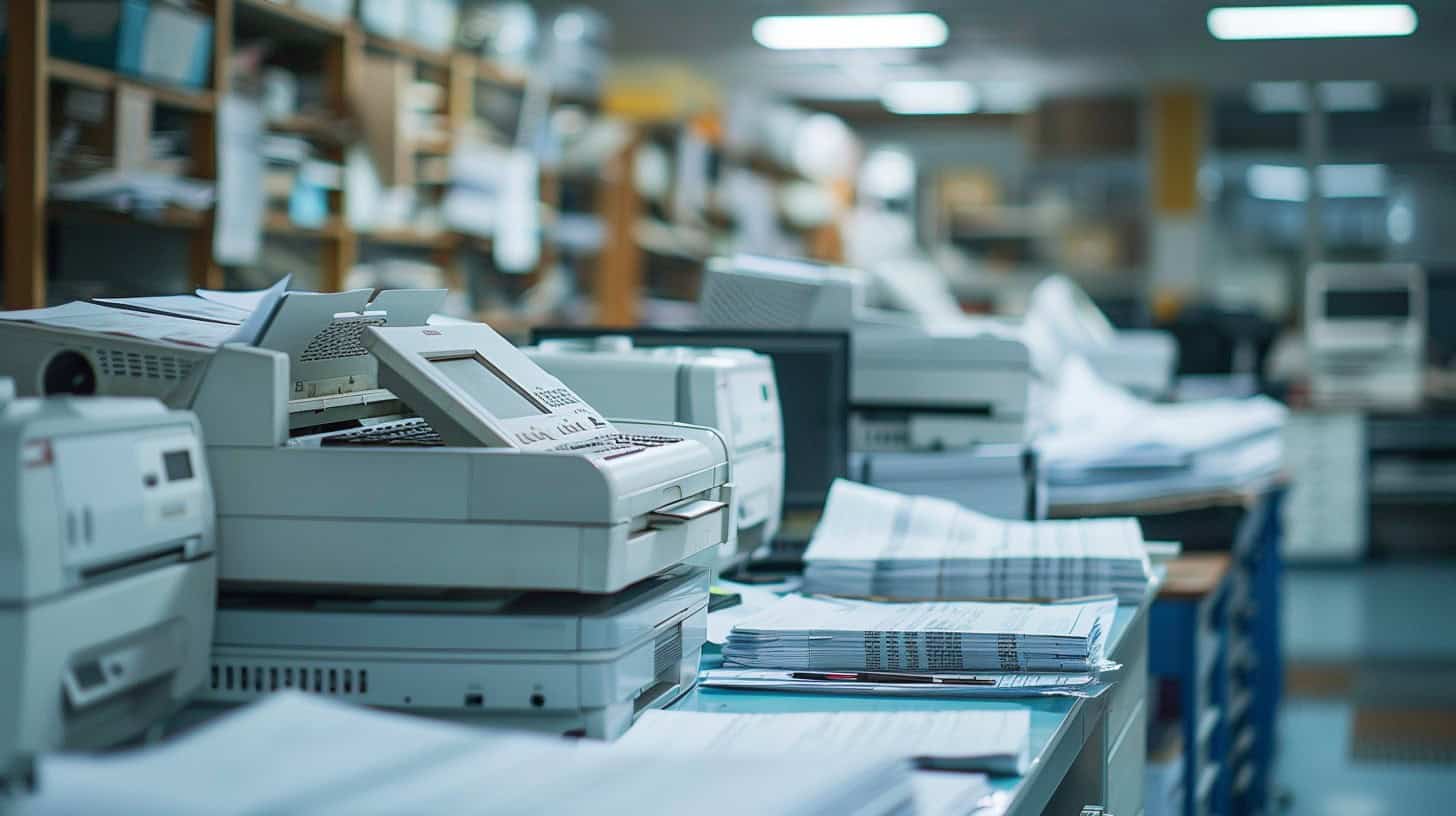
For sending a modern fax, you can use online services. These let you send and get faxes without needing old machines.
How to Send a Digital Fax
Sending a digital fax simplifies document transmission. It merges the tradition of faxing with modern technology. Here’s how:
- Choose an online fax service, like Ooma Office or eFax. These platforms integrate cloud technologies for seamless faxing.
- Sign up and log into your chosen service. Create a user profile, which usually involves email verification.
- Prepare your document. If it’s physical, scan it using a multifunction printer or scanner to create a digital file, preferably in PDF or TIFF format.
- Click “Send a Fax” within the service dashboard. Some services also offer mobile apps for tablets and cellphones for faxing on the go.
- Enter the recipient’s fax number, often including the country and area code, even if it’s an international send.
- Attach your document. Most services support various file types like PDFs, portable network graphics, or tagged image file formats.
- Add a cover page if needed. Most online fax services provide templates where you can add a message or relevant info about the documents attached.
- Review all details carefully—double-checking ensures you send to the right recipient and that all documents are correct.
- Hit “Send.” The service will convert your digital files into a format receivable by traditional fax machines or other online fax users.
- Wait for confirmation—most services send an e-mail message to confirm successful transmission.
Online faxes cut down time spent on traditional methods and reduce reliance on physical machines while ensuring security benefits over emails, making them ideal for fast-paced environments like legal offices, medical facilities, and fintech businesses concerned with privacy policies and record-keeping requirements. Postal delays become irrelevant as these solutions work without interruption from global locations—just need an internet service provider connection. Use these steps to send important documents securely and efficiently through digital means today!
Methods for Receiving Faxes Without Physical Machines
Getting faxes without a physical machine is easier now. Online services and apps do the job well.
- Use eFax for instant digital documents. This service lets you receive faxes directly to your email. You don’t need a fax machine.
- Digital fax services work worldwide. They keep your faxes private, away from spam folders or prying eyes.
- Apps turn your smartphone into a fax receiver. Download an app, link it to your email, and start getting faxes right in your hand.
- Computer software turns desktops and laptops into fax stations. Install the software, use your internet connection, and receive faxes without needing extra hardware.
- Email-to-fax solutions are great for privacy policy concerns. Send and get faxes through email with added encryption for safety.
- Online forums sometimes offer free or low-cost fax receiving options. Look for those that value user profiles’ security.
Each method ensures you stay up to date without needing old-school machines cluttering up space. This approach saves money on paper and toner too. With these solutions, you can manage all incoming faxes digitally—making life simpler and more secure than ever before.
